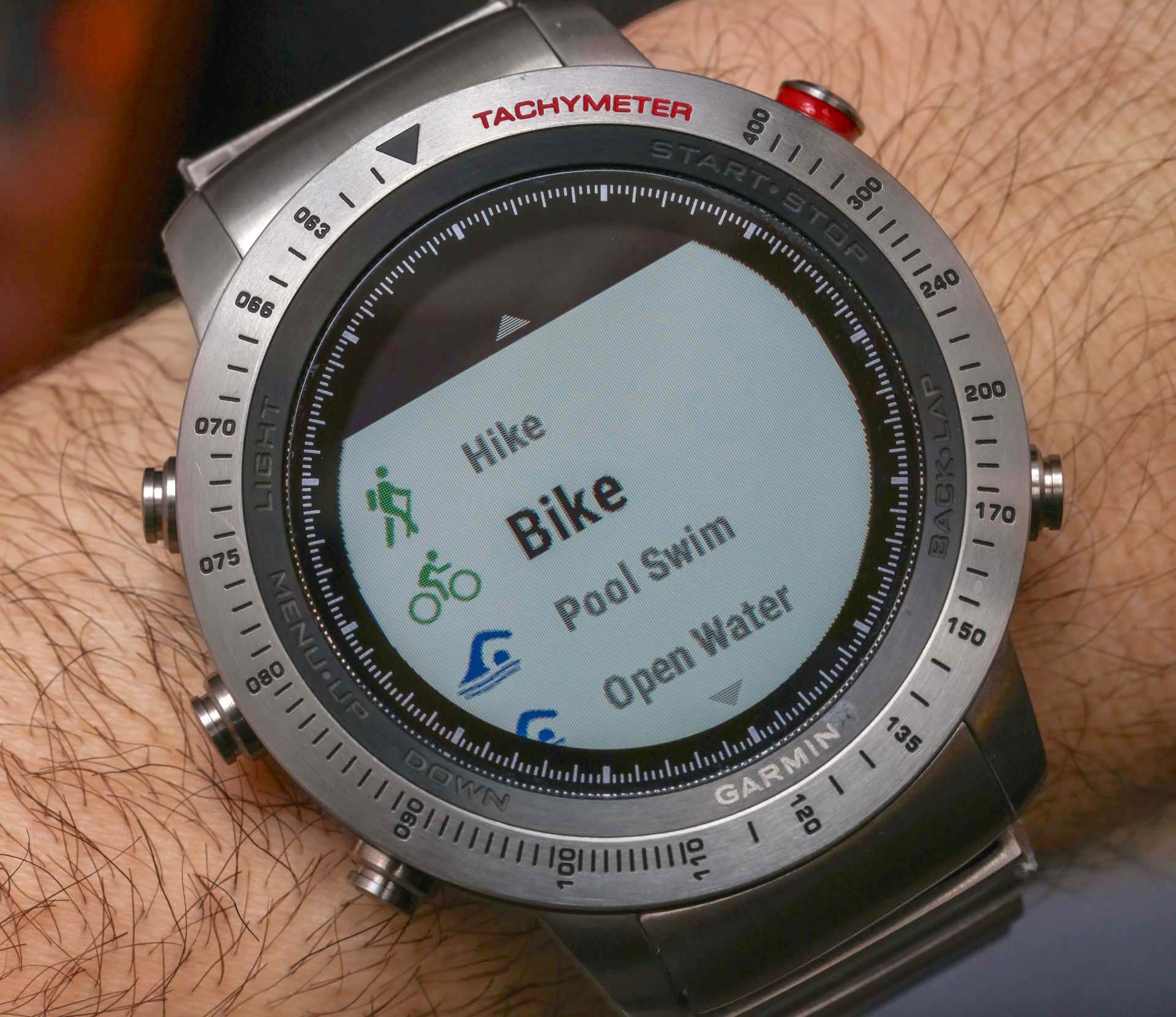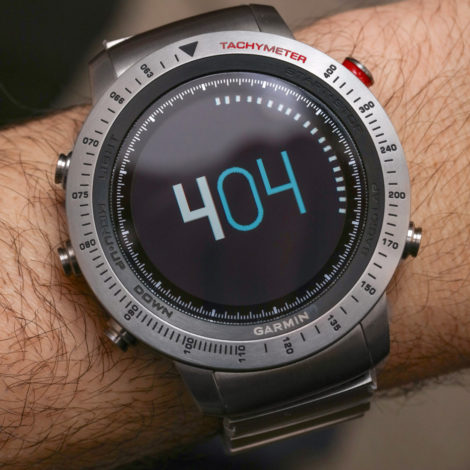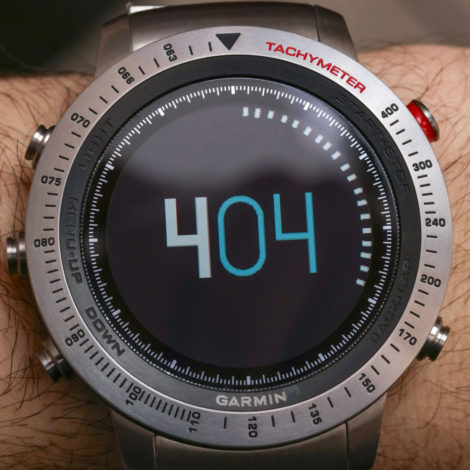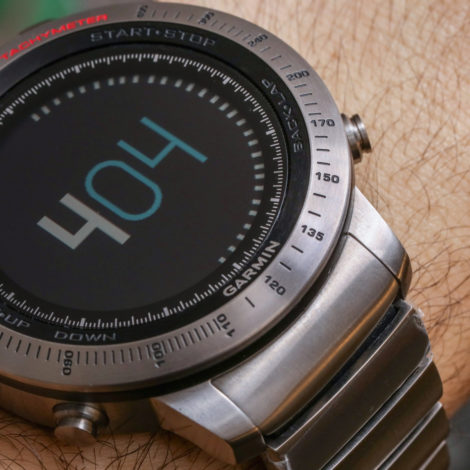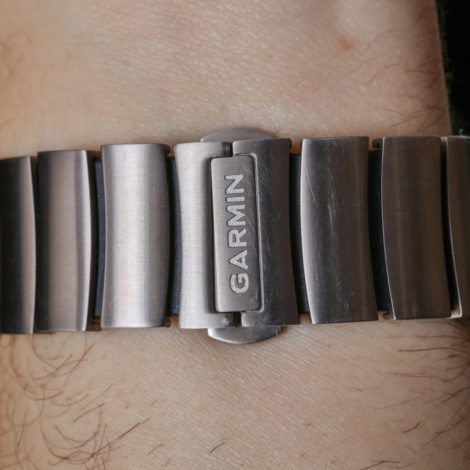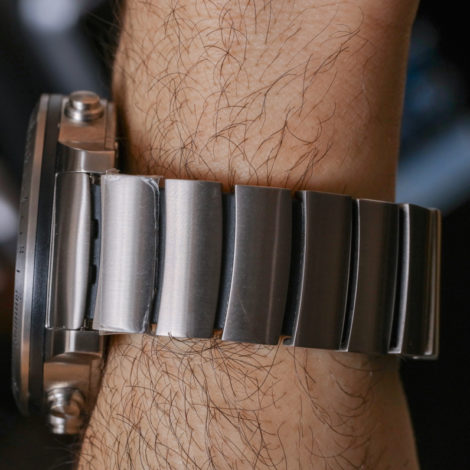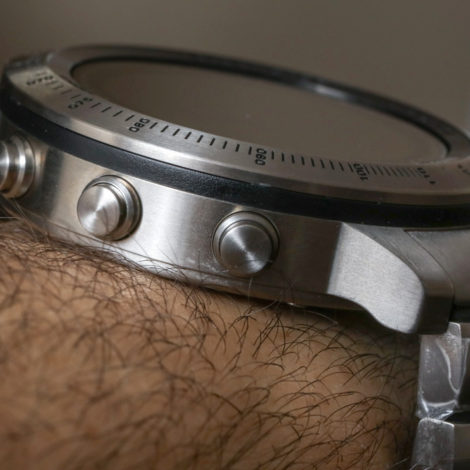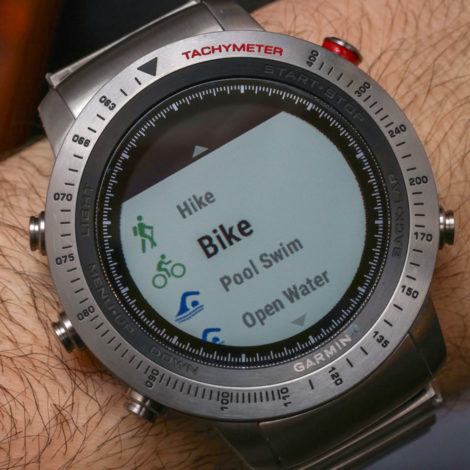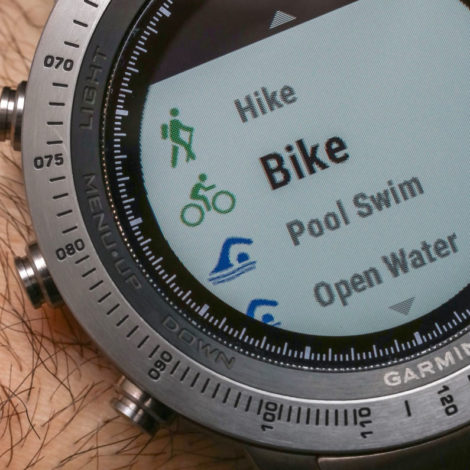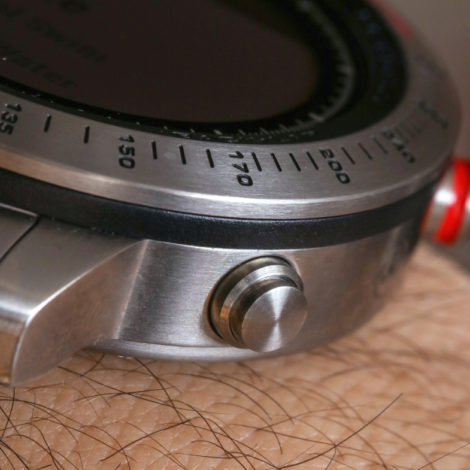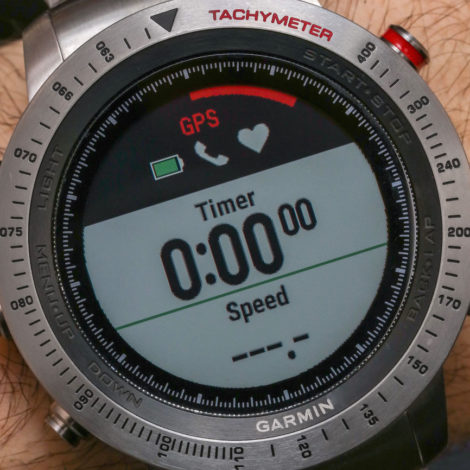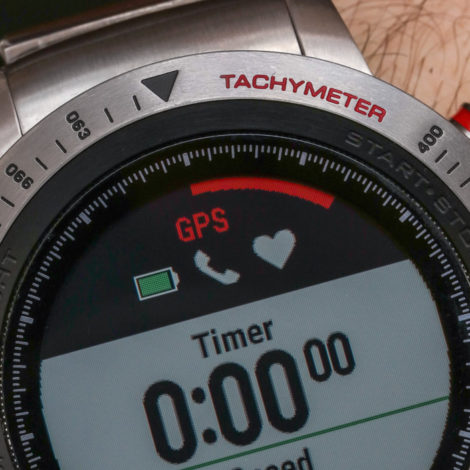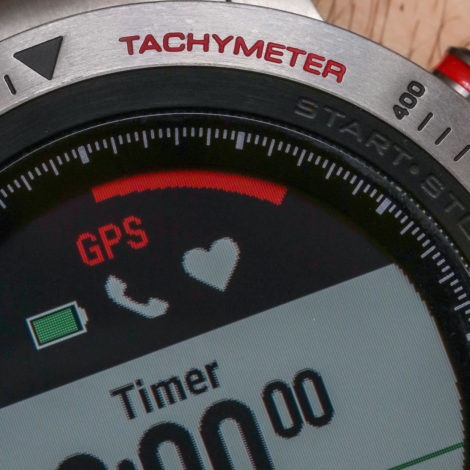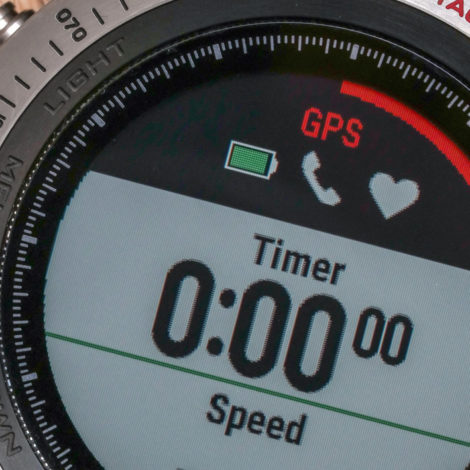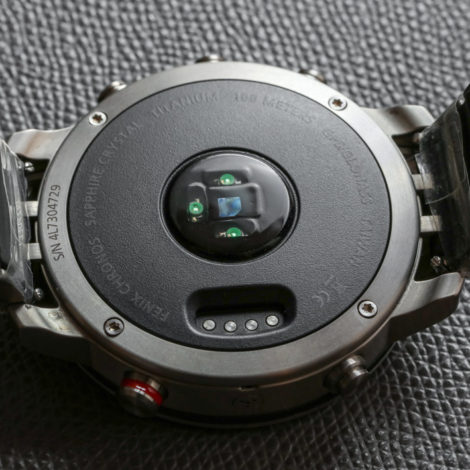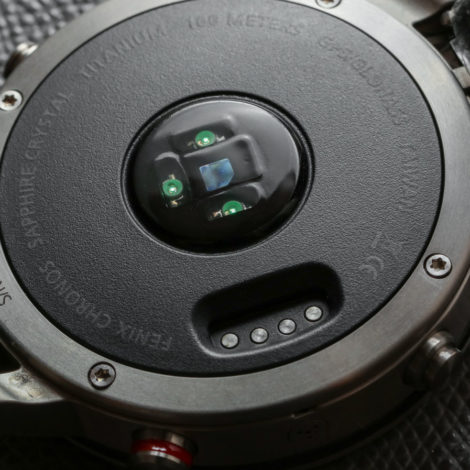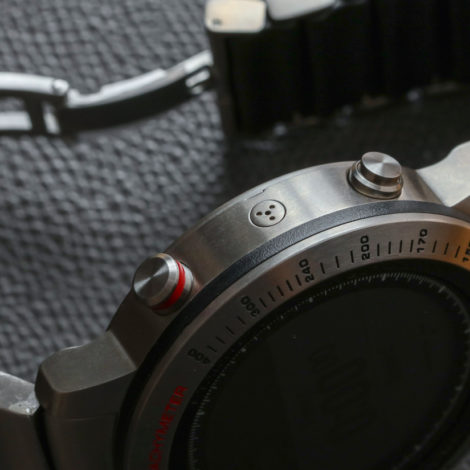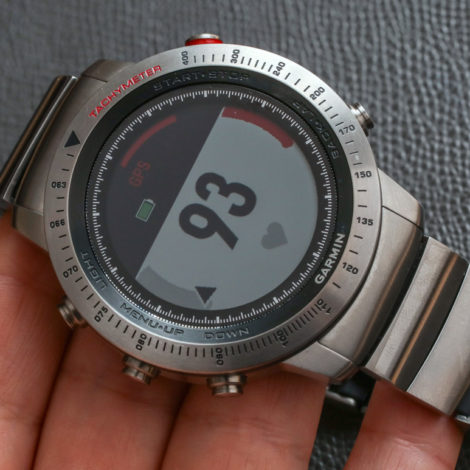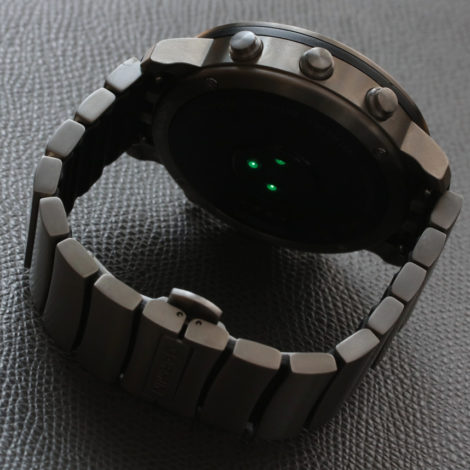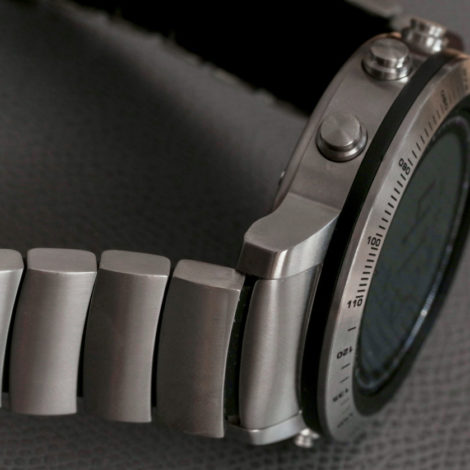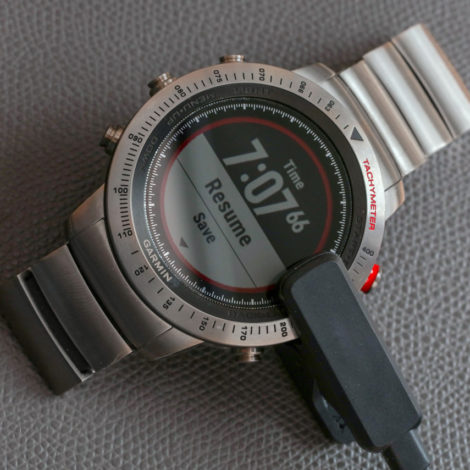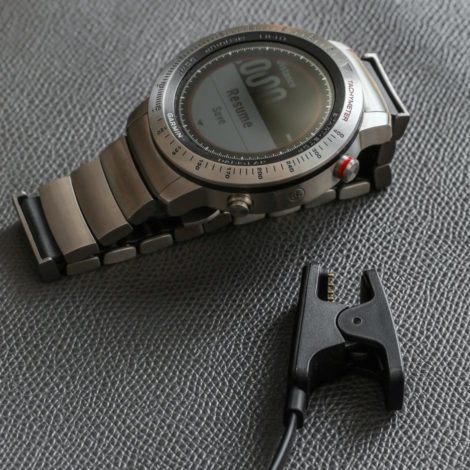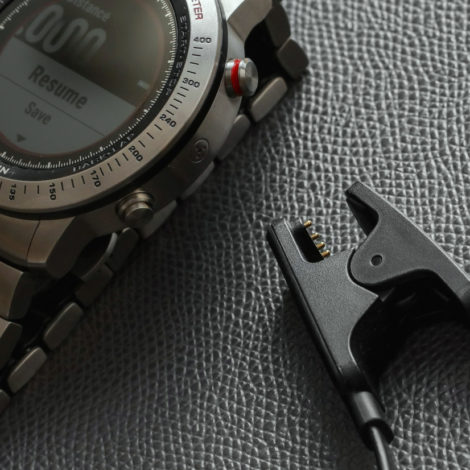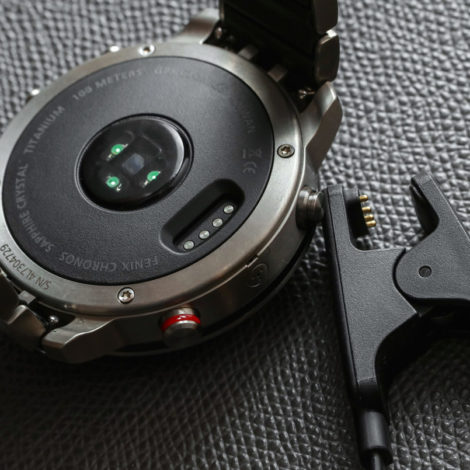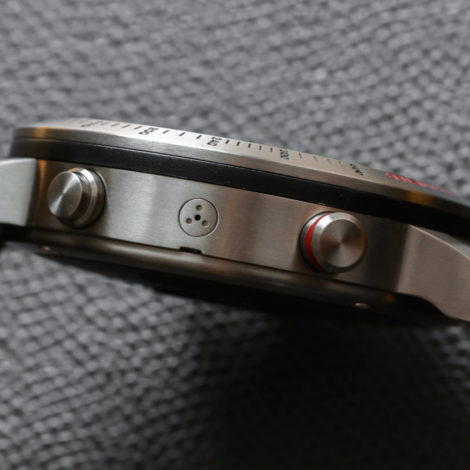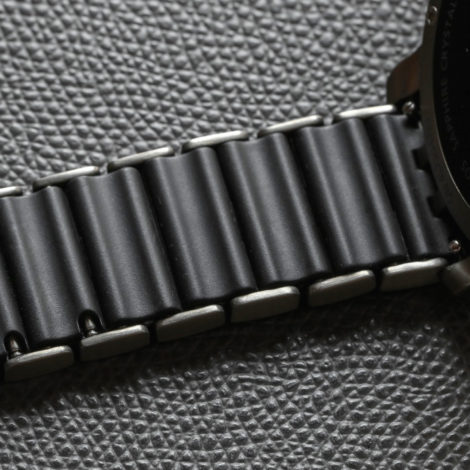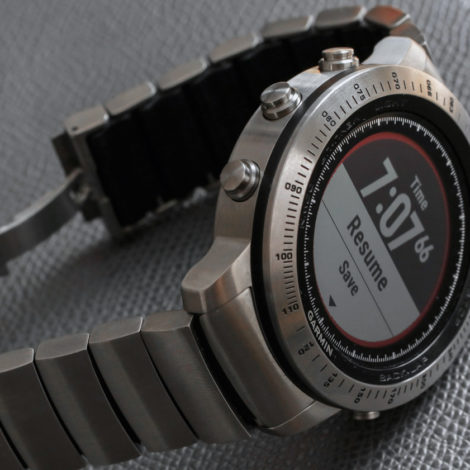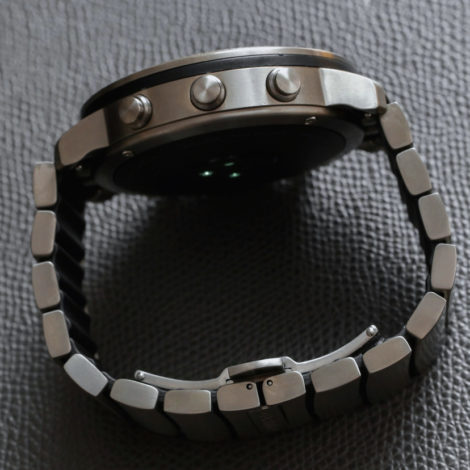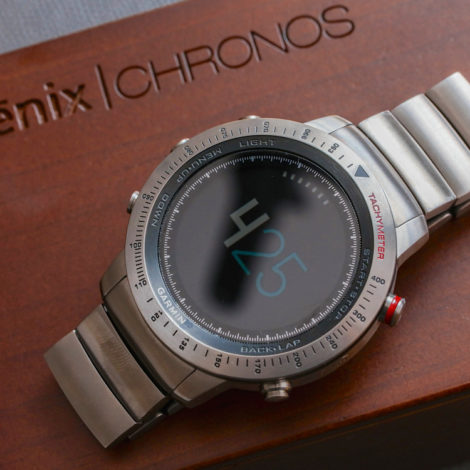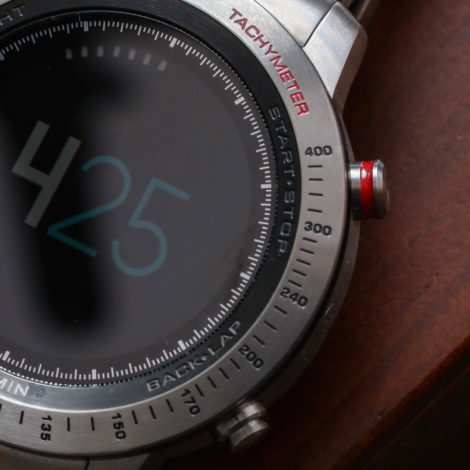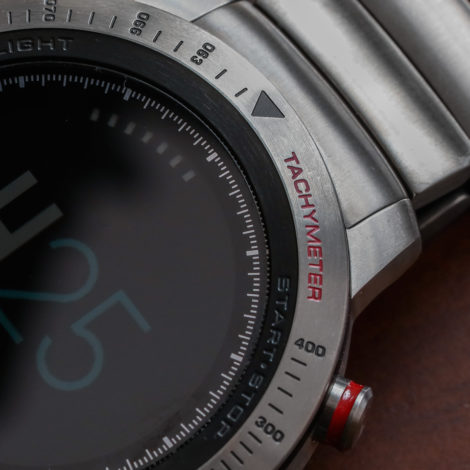
On the topic of the charging cable, I have good things to say about it. Garmin seems to be the only smartwatch maker I know to use a clip versus a magnet system to attach the charging cable to the back of the watch. This is so important because if you are charging the watch in a bag (the charging cable connects via USB, so it can connect to a battery easily), the watch will not accidentally disconnect from the charger. The charging cable might not be fancy, but it gets the job done really well and seems pretty sturdy.
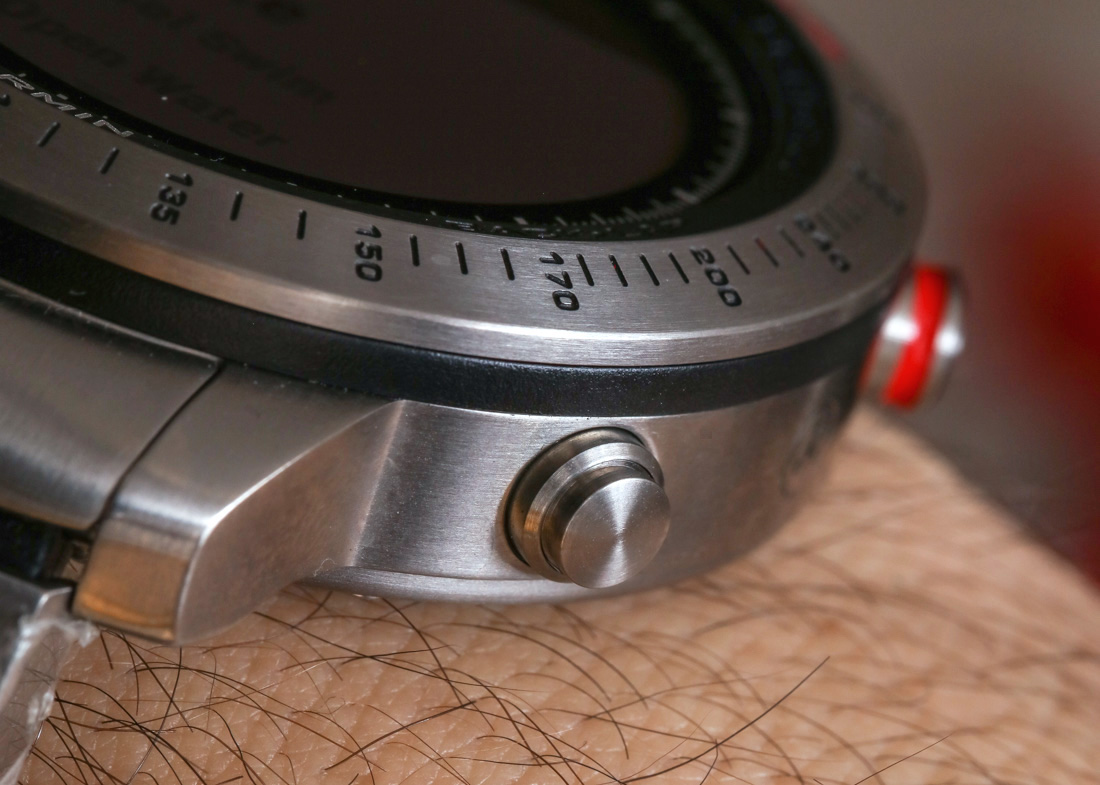
The 49mm wide case is also 15mm thick and water-resistant to 100m (about 50m more than most other durable smartwatches out there). The watch is big, but so are most smartwatches these days, and at this size it pretty much just wears like a G-Shock. The light weight of the titanium helps it to be comfortable, and I have nothing but positive things to say about the bracelet.
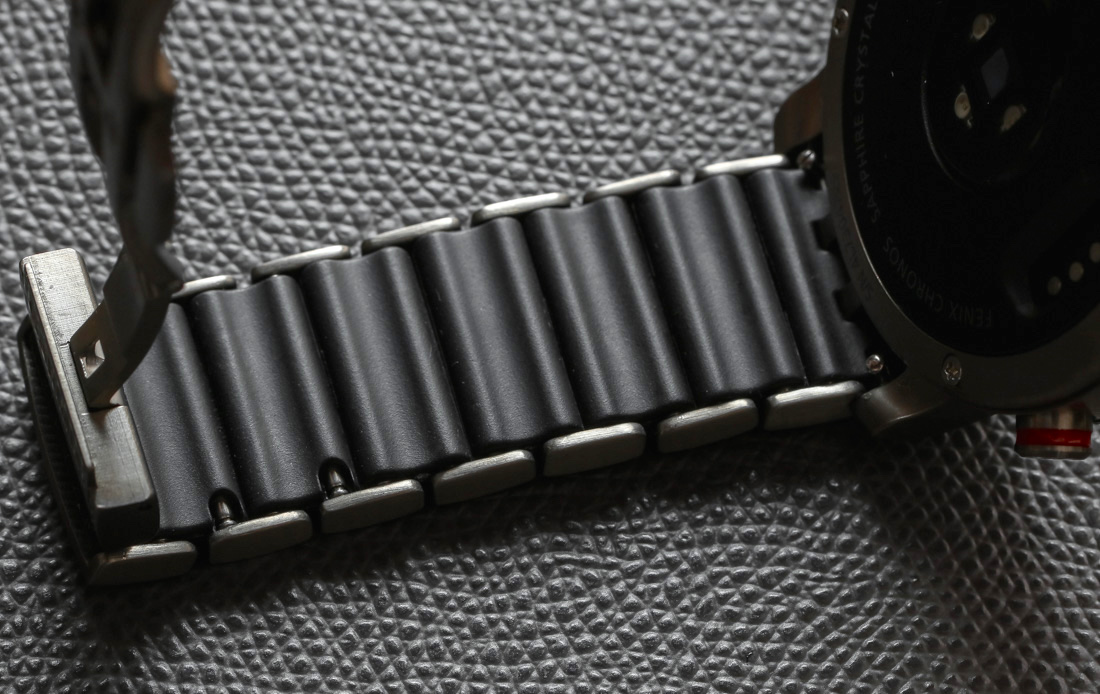
The bracelet is a combination of titanium links with a rubberized interior. The bracelet also has quick-release pins if you want to put the Fenix Chronos on any other strap or the included black silicone strap. The titanium bracelet is clearly more stylish, and benefits from having end-links which go right up to the case. One of the most appealing parts of the bracelet is its engineered ability to bend and twist a bit. The little bit of “give” goes a long way in helping it feel surprisingly comfortable after even long periods of wear.
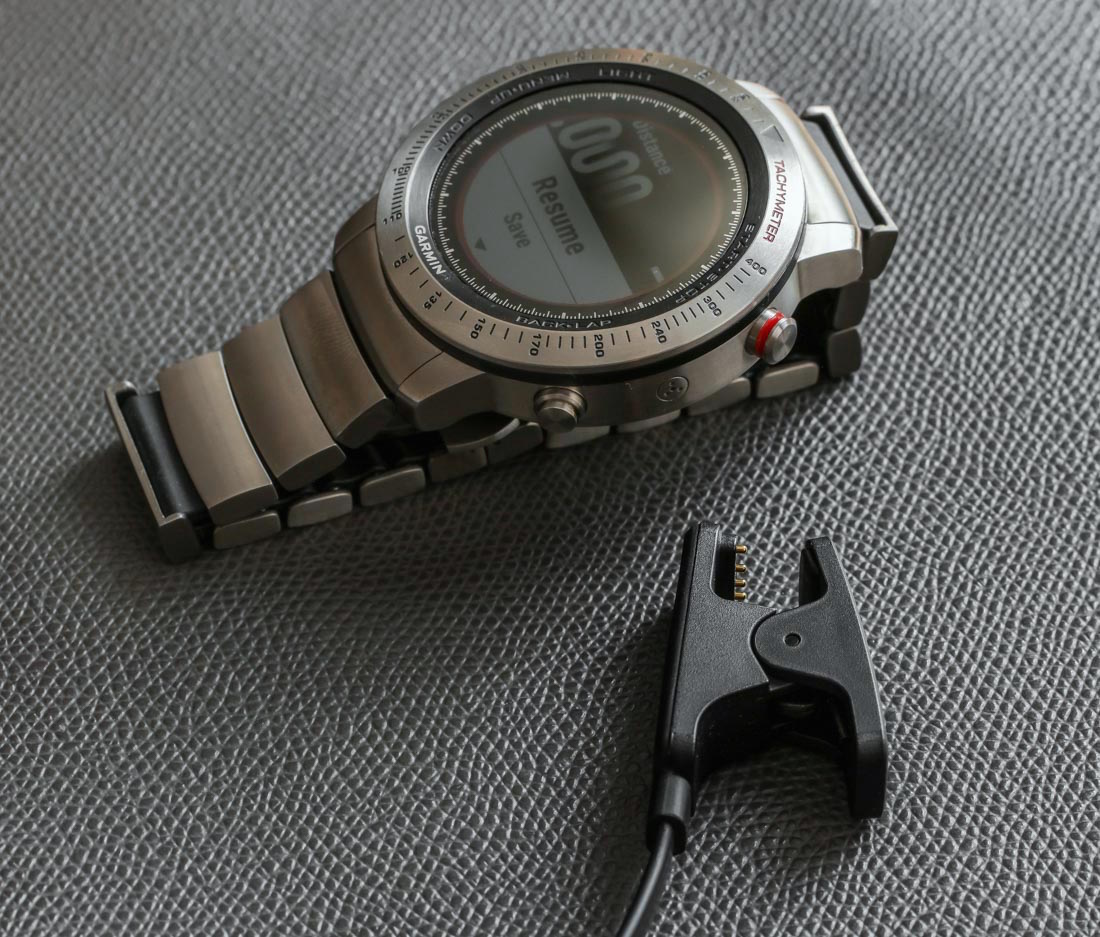
Garmin rates the Fenix Chronos as having anywhere from 13 hours to 8 days of use – mostly related to how often you rely on GPS. You’ll get 13 hours when a GPS signal connection is happening constantly – and honestly that is a fair amount of time given how small the battery in a watch is, and how power-intensive a constant connection with GPS can be. I think it is safe to say that you can easily get one full “awake day” per charge with pretty heavy use.
The screen is an interesting element on the Fenix watch, and another item that sets Garmin’s high-end smartwatch apart from others. The non-touch screen face is an always-on full color display that Garmin likes because they say it can be read in bright sunlight, and because it prevents the dial from ever being plain and blank (which I appreciate since I really dislike blank watch dials).
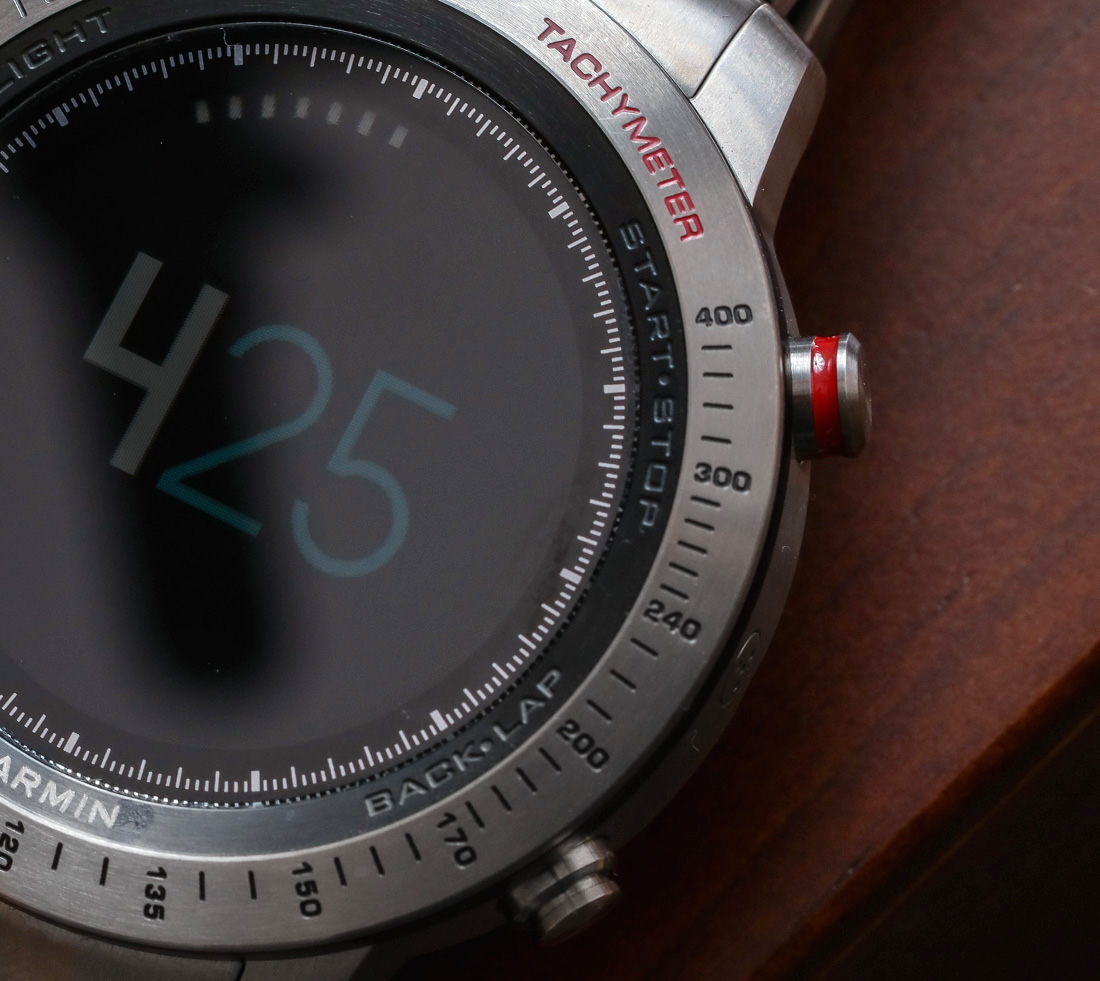
How well does the screen perform? That is an important question since there are pluses and minuses with Garmin’s approach to the screen. On the plus side there is pretty good contrast and legibility, a quality always-on state, as well as relatively modest power consumption. On the down side, the screen isn’t as vivid as more energy demanding screens and it isn’t a touch-screen. Personally I was pretty happy with the screen on the Fenix Chronos given the purpose of the watch, and in particular liked how it performed outside. Though if I was to spend a lot of time looking at minor details on the screen and needed to work with the menus a lot, I would prefer something a bit more modern and brighter. I do want to mention again that Garmin includes a backlight feature, which helps you read the dial in the dark with ease.

Around the face of the Fenix Chronos are three different bezel options depending on the model that you choose. The pictured model has one of two different tachymeter scales. This is probably the only “design element” on the watch which to me feels vestigial at best. Tachymeter scales look far cooler than they are, and I would bet good money that no one using a Garmin Fenix device will ever use one. This scale can only be used with an analog-style chronograph seconds hand, and is a tool to determine the speed of a moving object assuming you can reference its passage through two distance markers. Yes, its utility is vanishingly thin in today’s world.
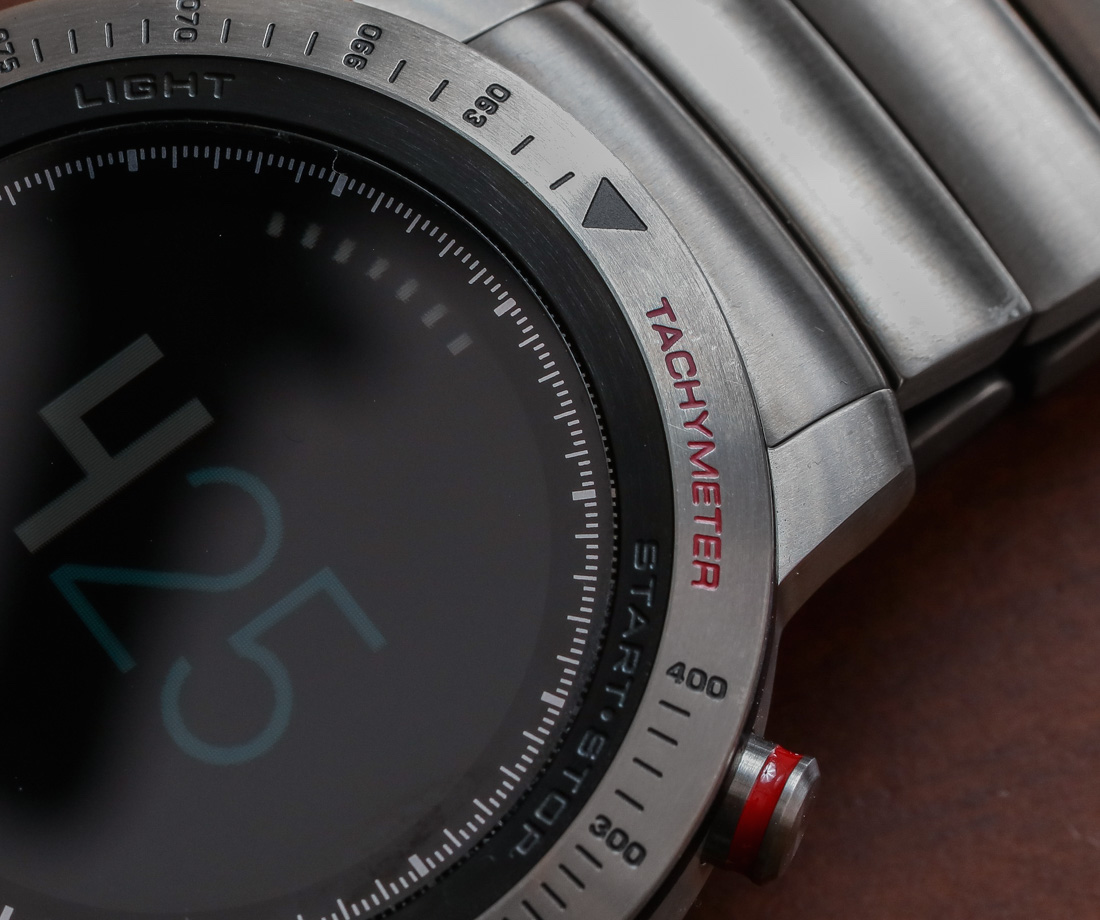
Why then did Garmin design not one, but two different tachymeter scale options for its high-end Fenix Chronos smartwatch? I’m not really sure, save for the fact that it looked better than a clean bezel devoid of any decoration or markings. I feel that this is Garmin’s homage to traditional sport watches – a romantic theme which I generally enjoy. Though for me I would have far preferred that the markings on the bezel be more readily useful to some other function or feature on the watch. Then again, at least the scale is a bit prettier than the asymmetric screw layout on the bezels of most non-Chronos Garmin Fenix watches.

Serious exercise and activity enthusiasts will really enjoy the Garmin given its sole focus on being the best activity sensor watch that it can be. With the world of accessories Garmin offers, as well as additional software, the Fenix Chronos can be even better suited to specific activities such as running, swimming, cycling, golfing, etc… I’ve not yet tested a better device for these purposes, and for the exercise I do, have found myself reaching for the Garmin Fenix Chronos before the other options at my disposal.

Having said that, Garmin’s pricing and marketing around the Fenix Chronos are decidedly “lifestyle.” That means they envision well-to-do weekend warriors choosing the Fenix Chronos for use also during the week, at work, in a suit, and during meetings. The device is about as pretty as you can get these days for a smartwatch activity device, but I’m not sure it has enough utility in these areas to merit constant use. Again, the smartwatch features are primarily designed around exercising, and unless your job requires you to monitor changes in barometric pressure and your altitude, the Fenix Chronos might be best swapped out with something a bit more traditional, or at least messaging-based during office hours.
The Garmin Fenix collection has prices which start at about $600 USD, and the Fenix Chronos collection starts at about $900 USD. This particular Garmin Fenix Chronos with the Titanium Hybrid Band has a price of $1,499 USD. garmin.com
Necessary Data
>Brand: Garmin
>Model: Fenix Chronos with Titanium Hybrid Band
>Price: $1,499 USD
>Size: 49mm wide, 15mm thick
>Would reviewer personally wear it: Yes.
>Friend we’d recommend it to first: Outdoor activity and workout enthusiast who likes to use data to push their performance further, with the budget for premium tech toys.
>Best characteristic of watch: As a purpose-built activity smartwatch with GPS, the Fenix Chronos is mostly unrivaled. Comfortable to wear with a clever and attractive bracelet. Screen sells itself the first time you are outdoors and can see it without having to manually activate the screen. Clip-on charging cable is a plus.
>Worst characteristic of watch: Price will be high for many. Tachymeter bezel design doesn’t add to utility. If technically possible, could benefit from the option to input commands via either a touchscreen or the pushers.

